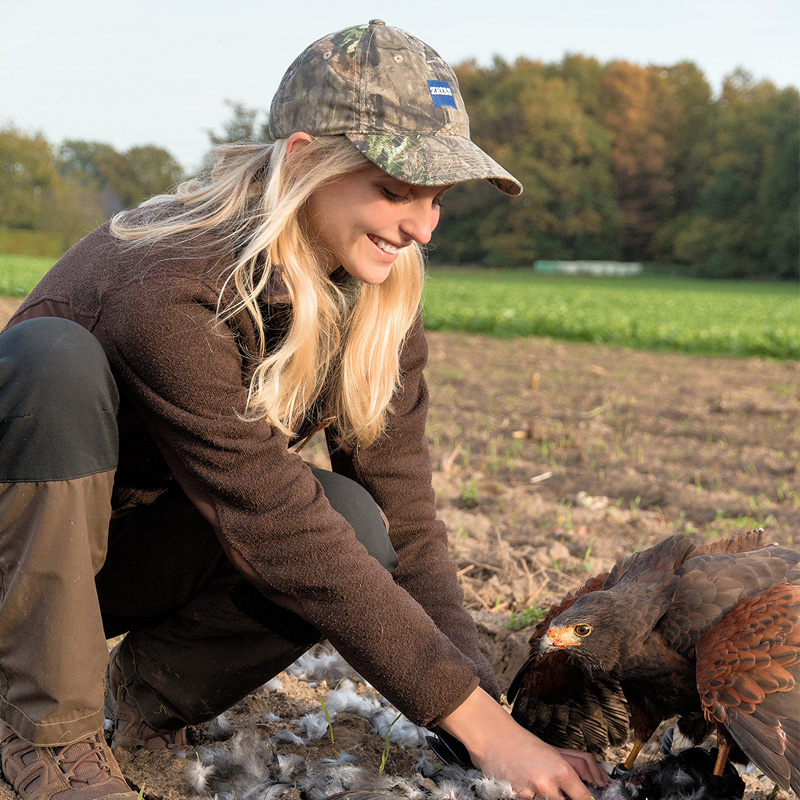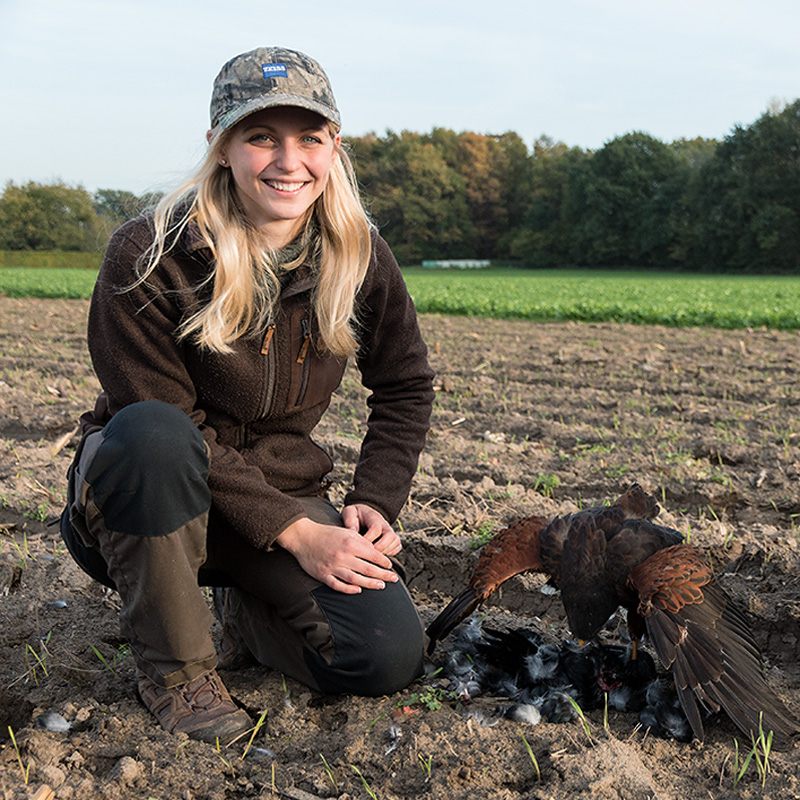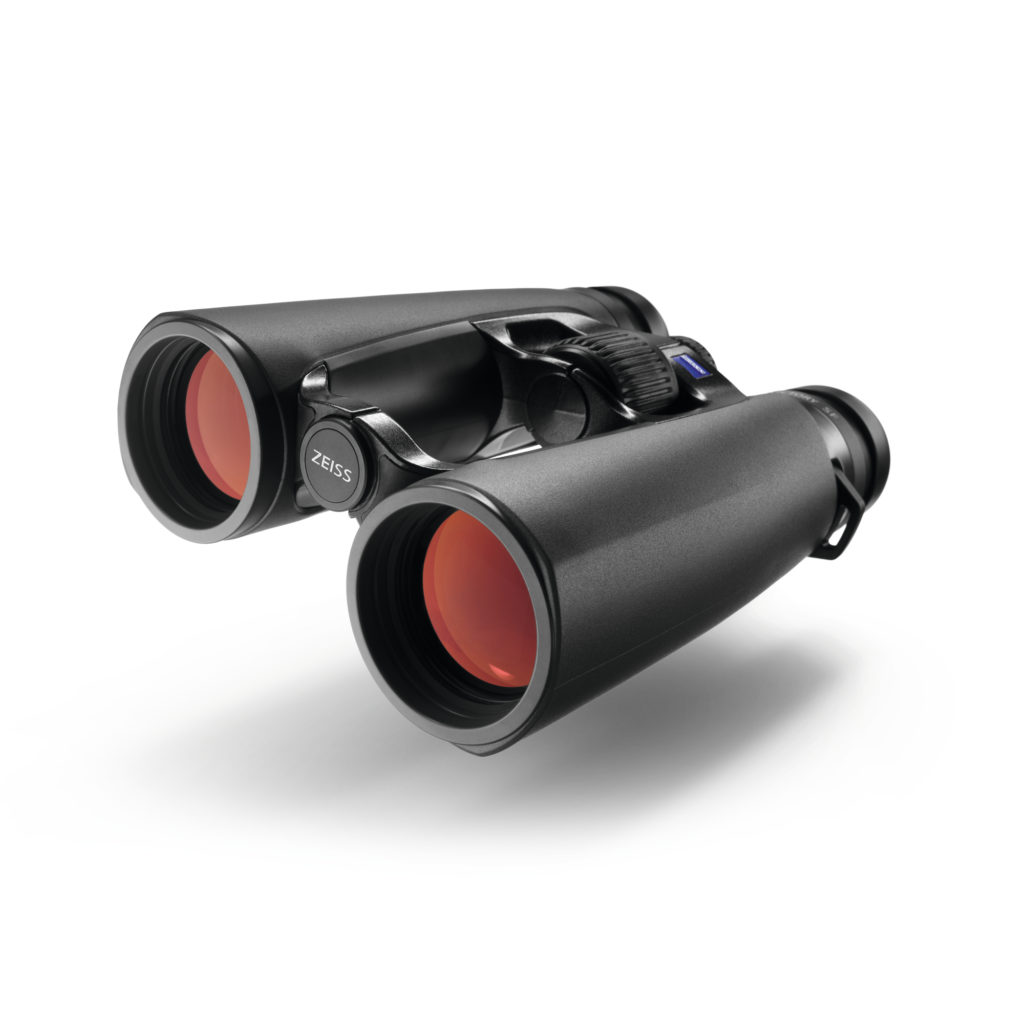Sandra Jung and Harris Hawk Dexter on the Hunt
The crow hunting season begins in August. I am an avid fan of this type of hunting, which I carry out with Dexter, my tercel Harris’ hawk. Falconers refer to male hawks as tercels because they are a third (Latin: tertium) smaller than their female counterparts on average.In the context of wild bird hunting, tercels are able to help us falconers because of their lower body weight, which makes them more agile.
Crows are very clever and skilful in the air, and they fly quickly. In order to give my buzzard Dexter at least a decent chance against these black birds, I give him some speed from the car.
Sandra Jung
It is important not to confuse the flight of a Harris’ hawk with that of a hawk. Hawks are much better suited to crow hunting because they have a different wing shape. They are naturally faster and more agile than buzzards.
However, a key advantage of the Harris’ hawk is its origin and background: as a native of Central America, it is not ‘known’ to our native crows. When Dexter takes off from the car and heads for a group of crows, they often fail to understand immediately the danger that is flying towards them. That is a great advantage for Dexter.
The situation is quite different for hawks, as they are one of the main enemies of crows in Germany. For this reason, corvids notice a hawk instantly – they call out a warning and initiate an escape.
You need a large, sprawling area to hunt crows with a bird from a moving car. Crows are incredibly intelligent animals: they often recognise vehicles and drivers from a distance after just one aerial hunt. For that reason, it can be highly advantageous to choose different grounds from time to time and to use another vehicle.
Once Dexter takes off from the car, he immediately starts chasing crows perched in the right position. A fascinating spectacle of nature can be observed at this point: Dexter often goes for a bird in the group that is not the one I believe to be the best choice at first sight. Why should that be so? Over time, I have learnt that the animals Dexter chases and catches in a fraction of a second as they take flight are sick, weak, or inexperienced birds. In many cases, they have injured legs, damaged feathers, or the like. Hunting with a bird of prey therefore results in an ideal selection process that is not possible to the same extent for human hunters: sick or otherwise weak birds are removed from nature, helping to maintain a healthy wildlife stock.
Most hunting flights are a spectacle to behold. Many crows are late in perceiving Dexter as a threat. They take off after a long delay and try to escape the aerial hunter – already very close – by flying in agile loops, suddenly dropping in altitude, changing speed or carrying out other flight manoeuvres. Of course, the Harris’ hawk tries to follow these acrobatics. He is often successful, but not not always. Dexter stands no chance if the crow is too smart and experienced.
If one of these fascinating hunting flights is successful, I let the dog out to sprint to the bird. It is common for the other group members to resent the buzzard with his prey. Balu, my bird dog, therefore rushes up to his partner and keeps the other crows off his back.
Crows are very defensive, and their pointed beaks can make them dangerous for a sitting bird of prey. You could consider the dog to be the buzzard’s bodyguard.
Sandra Jung
If I get to the bird myself, I may take hold of the captured crow and help Dexter get to the meat by plucking some feathers. Dexter can then fill his crop on his prey – a turn of phrase we falconers use to mean that he can eat as much as he likes. This is the perfect end to the positive experience of a successful hunting flight: the bird will happily give his all next time to ensure a bountiful hunt.
Since these hunting flights use up a great deal of energy (and there may be unsuccessful attempts before the prey is caught), it is essential that hunting birds are in excellent physical condition. If they are not well fed, well trained and muscular, a few failed flights can lead to absolute exhaustion. That would lead to a bird being unable to hunt because he is too weak. This must not happen. Daily weight checks are essential when it comes to checking that hunting birds have a healthy constitution.
At the end of a successful day’s hunting, the bird can return to the aviary and enjoy some fresh water. Only if a bird of prey has everything it needs will it remain willing to work with a human partner. For me personally, the greatest happiness on earth is to go hunting with a bird and a dog in the knowledge that you form an unbeatable team with these animals.



